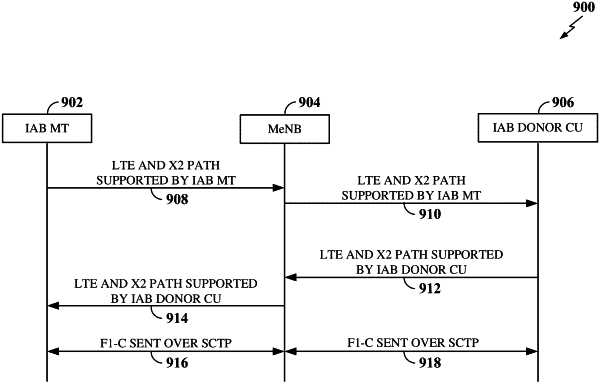| CPC H04W 76/11 (2018.02) [H04W 72/20 (2023.01)] | 30 Claims |

|
1. A method for wireless communication at a radio access network (RAN) node, the method comprising:
communicating with a first scheduling entity over a first communication path using a first radio access technology (RAT);
communicating with a second scheduling entity over a second communication path using a second RAT that is different from the first RAT;
generating a first message comprising a first indication that the RAN node supports communication of information for a first signaling connection with the first scheduling entity via a second signaling connection over the second communication path, wherein the first signaling connection is associated with first Internet Protocol (IP) address information;
transmitting the first message comprising the first indication to the second scheduling entity via the second communication path prior to establishing the second signaling connection over the second communication path to the first scheduling entity;
receiving a second message from the second scheduling entity via the second communication path after transmitting the first message, wherein the second message comprises a second indication that the first scheduling entity supports the communication of the information for the first signaling connection via the second signaling connection over the second communication path, and wherein the second message comprises second IP address information that is different from the first IP address information from the first scheduling entity;
using the second IP address information to establish the second signaling connection over the second communication path to the first scheduling entity after receiving the second message comprising the second indication; and
communicating the information for the first signaling connection via the second signaling connection over the second communication path.
|